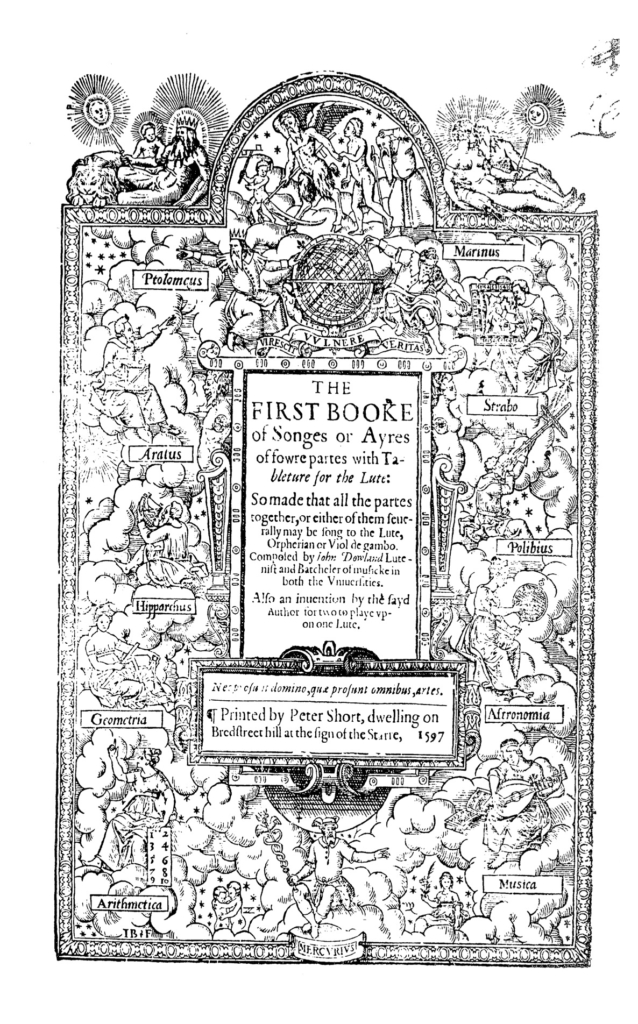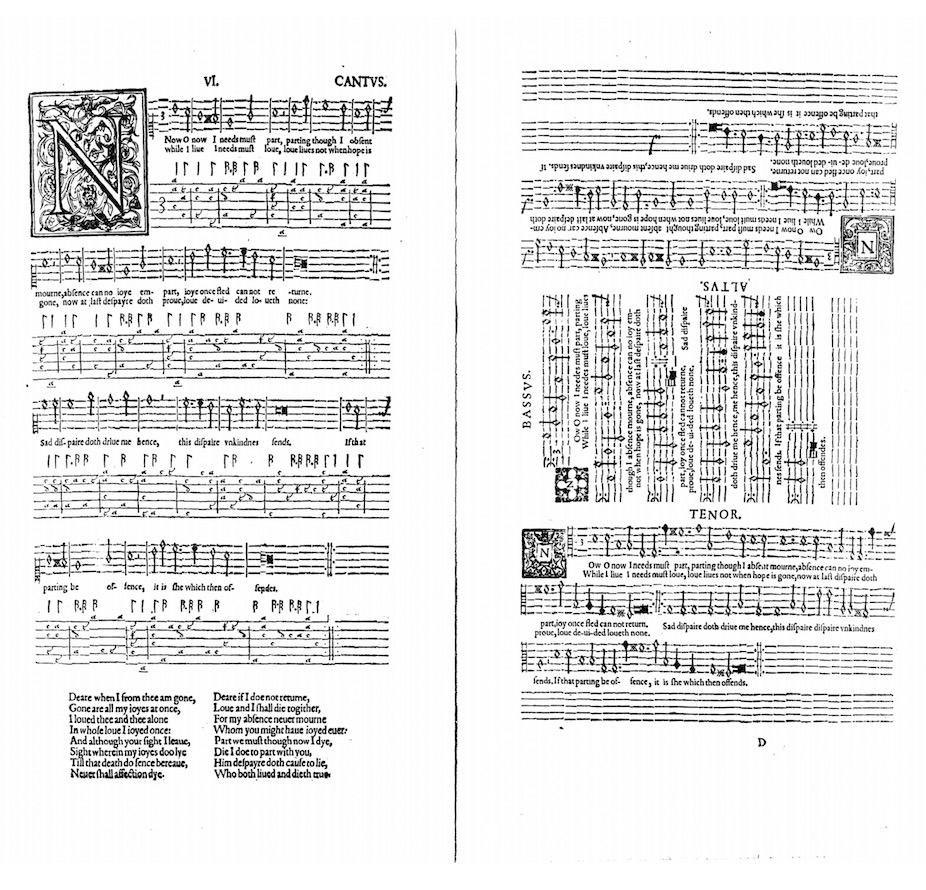Excerpt from Anne Schuster Hunter’s blogpost from May 2021
“No hope, nor help there doth remain, but down, down, down I fall”
“Sorrow stay”: lyric by anonymous, music by John Dowland (1562 – 1626),

Photo: International Music Score Library Project (IMSLP) /Petrucci Music Library
John Dowland. Renowned then and perhaps the best-known composer of early English song now, he was the master of melancholy—a characterization himself admitted when he named one of his pieces “Semper Dowland, semper dolens” (“Always Dowland, always mournful”). Hearing him in public provides a special frisson to all of us who’ve been waiting impatiently for clubs and music venues to reopen, as sad songs are particularly enjoyable when heard live.
But a side detail in the Dowland story gives his songs an odd relevance in today’s pandemic reemergence. When his First Booke of Songes or Ayres were printed in 1597, it was England’s first “table book,” a tidy little volume that gave music-buying customers two different options for playing, one solitary, the other with company and both on the same page. Just for fun, here in 2021, we can think of these two versions as “before” and “after.”
PLAYING ALONE…

The “before” on the left-hand side of each two-page spread in the First Book (and later publications, too) prints the song and a lute entablature on one side for singing and playing alone—what so many musicians have had to do in the last 15 months.
…PLAYING WITH OTHERS
The “after” is printed on the right-hand side and has individual parts for alto, tenor and bass so that a three-part consort could join in—like, for instance, now with the mask mandate lifted.
And in a stellar bit of graphic design, the consort parts are laid out on the page radially. One is rightways-up, one is sideways, and one is upside-down so that people playing together can pull up around a table, put the book in the center, and each get a good sightline on their part. It’s adorable.
“Come away, come sweet love: all the air, all the earth of love and pleasure speaks”
“Come away, come sweet love”, published 1597: lyric by anonymous, music by John Dowland
Anne Schuster Hunter is a writer, teacher of creative writing, and art historian in Philadelphia. www.anneschusterhunter.com
